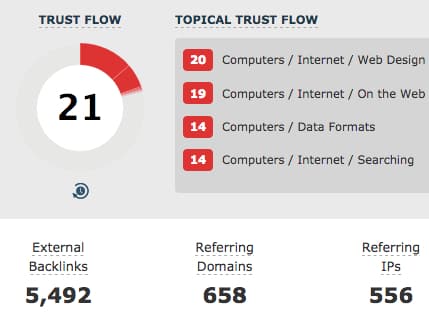Well, here’s one that has got me scratching my head. Actually, I’m trying to decide if I should be scratching my head or doing a face-palm thing. An old post from Microsoft, which was a pretty important announcement, is being redirected to another URL. But wait, it actually doesn’t redirect. And then when you click the link that they tell you to, because it’s been moved to another location, you get another notice that you’ll be redirected to the new location. Oh wait, it doesn’t redirect you. Confused yet? You should be.
What’s going on? Why all the redirects?
So, here’s the story. Back in 2009, the search engines got together and decided to create this new cool tag that would solve all sorts of issues with crawling, as well as solve the duplicate content issue (which now apparently doesn’t really exist). They called it the Canonical Tag. That day, the announcements were be posted by Google, by Microsoft, and others that supported this new tag. That day, I registered CanonicalTag.com and Canonical-Tag.com, put up a WordPress site, and for year and years it ranked in the top 10 in Google for “Canonical Tag”. It’s slipped now, and that’s okay with me, as I haven’t maintained it very well. But I digress.
Fast forward to today, when I decided to update the site–and use some new AI technology to auto-generate a blog post called “What is the Canonical Tag?”, which is posted on that site. Checking the links on the site, I came across Microsoft’s announcement about the Canonical Tag, which I had linked to in the sidebar of the site: because it’s important. Their post was titled “Partnering to help solve duplicate content issues”, which is still linked in that sidebar. Looking at Majestic, there are roughly 5500 links historically to that blog post, from over 650 domains:

Not bad for a blog post, to have over 5,000 links to it from over 650 unique domain names, right? That’s called getting natural links to it because of the content. It’s their announcement about the Canonical Tag, which, in fact, is a pretty big deal now (well, it’s used a lot on a lot of sites).

So, when you now click on that link, you get this:
Object Moved
This document may be found here
THE BLOG YOU ARE ATTEMPTING TO ACCESS IS SCHEDULED FOR MIGRATION, PLEASE CHANGE YOUR URL TO GO TO HTTP://BLOGS.MSDN.COM/ OR HTTP://BLOGS.TECHNET.COM/, ONCE THE BLOG IS MIGRATED, YOU WILL AUTOMATICALLY GET REDIRECTED TO THE NEW BLOG SITE
Wait, what?!? OK, they have moved the blog post. OK, so why didn’t you redirect it with a 301 Permanent Redirect? Well, okay, Microsoft wants to tell us it’s moved.
OK, fine. At least they link to it, right?
Nope!
Well, you click on the link and it goes to ANOTHER notice:
THE BLOG YOU ARE ATTEMPTING TO ACCESS IS SCHEDULED FOR MIGRATION, PLEASE CHANGE YOUR URL TO GO TO HTTP://BLOGS.MSDN.COM/ OR HTTP://BLOGS.TECHNET.COM/, ONCE THE BLOG IS MIGRATED, YOU WILL AUTOMATICALLY GET REDIRECTED TO THE NEW BLOG SITE
with a “website unavailable” title tag. I mean, really?
Which, in fact, is a 404 error:
HTTP/1.0 404 Not Found => Content-Length => 2926 Content-Type => text/html; charset=UTF-8 X-Pingback => https://blogs.msdn.microsoft.com/webmaster/xmlrpc.php Link => ; rel=shortlink Strict-Transport-Security => max-age=31536000; includeSubDomains; preload Request-Context => appId=cid-v1:1e40abc5-5fc0-4c08-939b-4be4566cca4b X-XSS-Protection => 1; mode=block X-Content-Type-Options => nosniff ARR-Disable-Session-Affinity => true Date => Tue, 16 May 2017 19:00:37 GMT Connection => close Set-Cookie => msdn-blogs-aad-state-parameter=2710EEA1-A9E7-32A2-3DD6-76AFB677596C; path=/; secure; httponly
It ends being a 404 error, with a somewhat helpful link to go to the new location, but that link doesn’t work. So clicking on it ends up being another 404 error.
So, I did some digging around. On Google. And, look what I found: it turns out that they’ve moved the content to the Bing blog, but they didn’t bother to redirect the old blog content to the new blog content. Here’s the old post, but it’s now on the Bing blog:
https://blogs.bing.com/webmaster/2009/02/12/partnering-to-help-solve-duplicate-content-issues
Makes total sense, right?!?
Seems to me that all they’d have to do is set up redirects from the old subdomain blogs.msdn.microsft.com to blogs.bing.com. Such an easy fix. Would take only a few minutes to complete. At this point, http://blogs.msdn.microsft.com/ doesn’t even redirect to blogs.microsoft.com.
This is a fine example of the fact that sometimes even though we preach SEO, site migrations, and technical SEO (it’s the Bing Webmaster blog, after all!), sometimes even the largest companies don’t know what they’re doing.